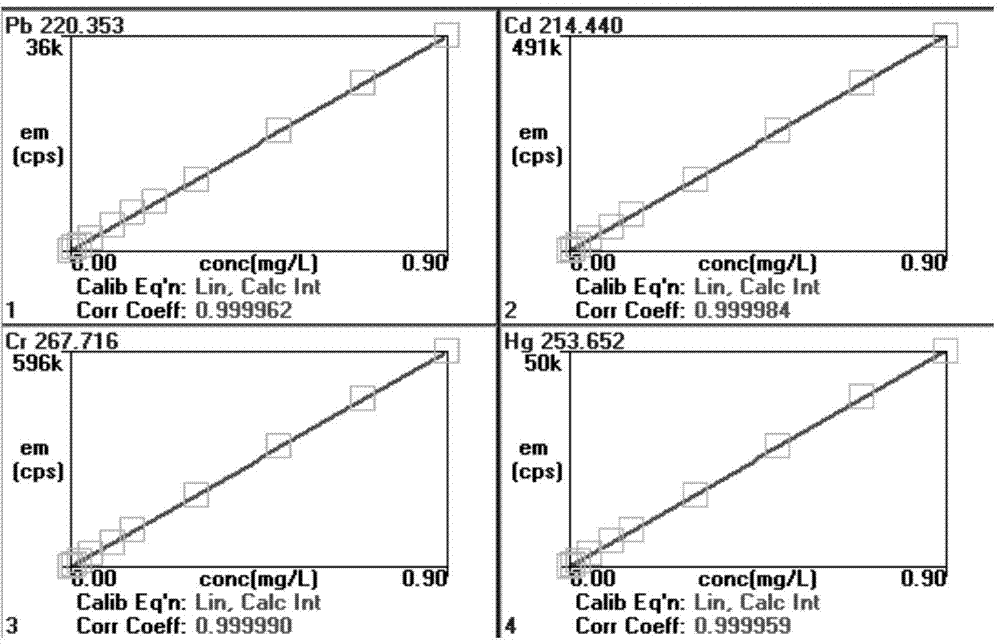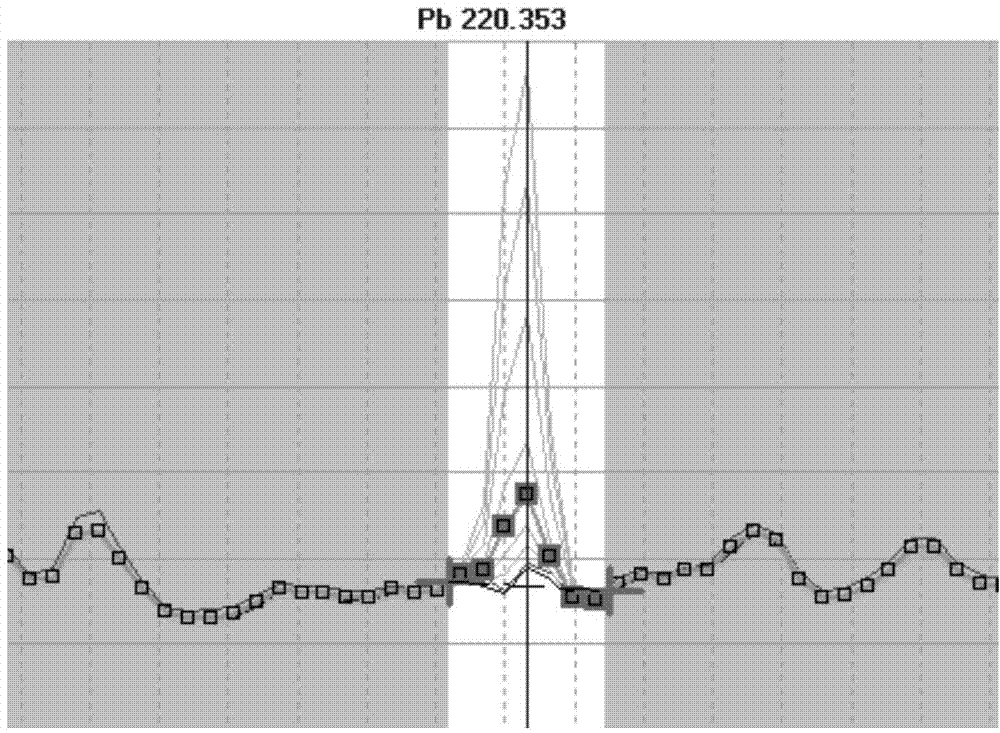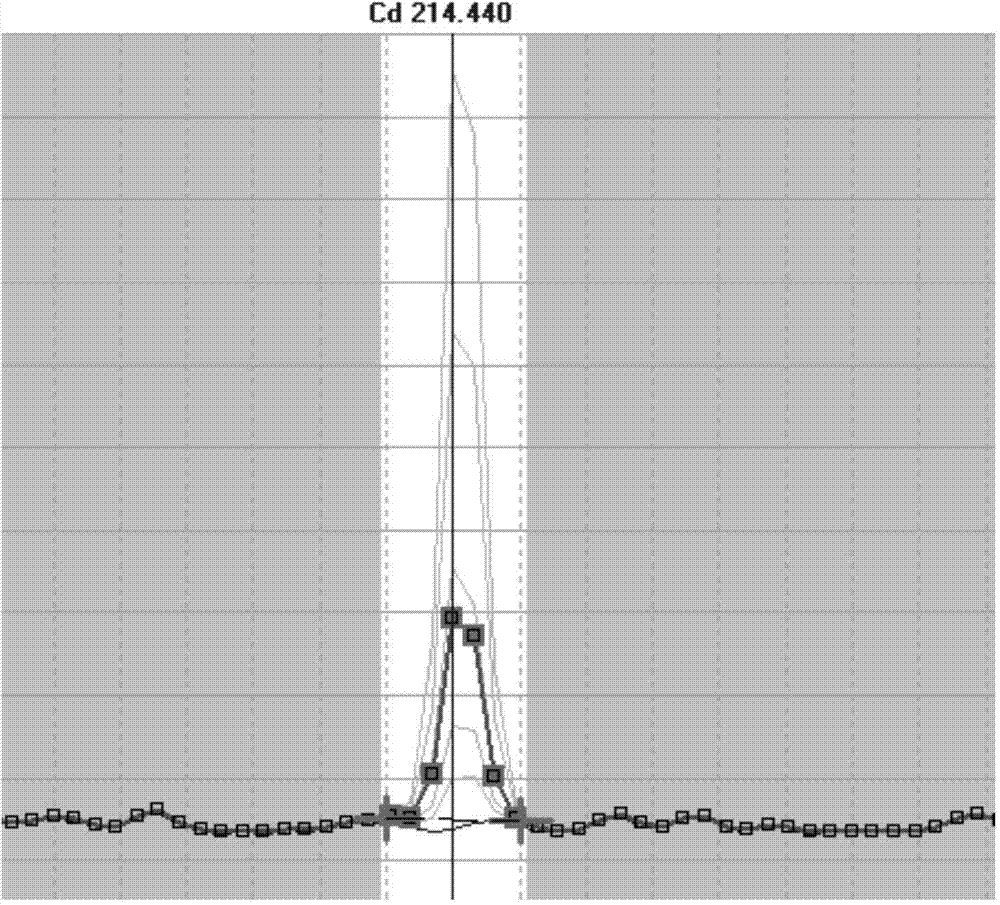Method for detecting content of heavy metal in polymeric material and sample treatment method
A polymeric material and sample processing technology, applied in the preparation of test samples, measuring devices, material separation, etc., can solve the problems of high experimental cost, volatilization loss, and easy adsorption
- Summary
- Abstract
- Description
- Claims
- Application Information
AI Technical Summary
Problems solved by technology
Method used
Image
Examples
Embodiment 1
[0062] In this example, the polymer material sample containing heavy metals lead, cadmium, chromium, and mercury at the same time, ERM-EC681k is selected as a "blind sample" for detection, and the method for detecting the content of heavy metal lead, cadmium, chromium, and mercury in the polymer material, Specifically include the following steps:
[0063] a. Pretreatment of the sample, including the following steps:
[0064] (1) Weigh 0.3g of ERM-EC681k into a beaker, add 5mL of concentrated sulfuric acid with a mass concentration of 98%, place the beaker on a heating plate, heat it to 350°C and emit sulfuric acid smoke, the sample is digested and carbonized, thereby polymerizing the material. The heavy metals contained in it all generate their corresponding sulfates, and the organic components are completely carbonized into black substances;
[0065] (2) Concentrated nitric acid with a mass concentration of 68% is added dropwise to the sample carbonized in step (1) and emits...
Embodiment 2
[0074] The lead, cadmium, chromium, and mercury-containing polymer material samples in this example are selected as "blind samples" for detection. ERM-EC680k is used for detection. The methods for detecting the contents of lead, cadmium, chromium and mercury in the polymer materials include the following step:
[0075] a. Pretreatment of the sample, including the following steps:
[0076] (1) Weigh 0.5g of ERM-EC680k into a beaker, add 5mL of concentrated sulfuric acid with a mass concentration of 98%, place the beaker on a heating plate, heat it to 350°C and emit sulfuric acid smoke, the sample is decomposed and carbonized, thereby polymerizing the material. The heavy metals contained in it all generate their corresponding sulfates, and the organic components are completely carbonized into black substances;
[0077] (2) Add 65% concentrated nitric acid dropwise to the sample carbonized in step (1) and emit sulfuric acid smoke until the black carbonized material disappears co...
Embodiment 3
[0084] The lead, cadmium, chromium, and mercury-containing polymeric material samples in this embodiment are selected as the "blind sample" for detection. The method for detecting the contents of lead, cadmium, chromium, and mercury in the polymeric material specifically includes the following steps:
[0085] a. Pretreatment of the sample, including the following steps:
[0086] (1) Weigh 0.2g of BW3079 into a beaker, add 3mL of concentrated sulfuric acid with a mass concentration of 95%, place the beaker on a heating plate, heat it to 300°C and emit sulfuric acid smoke. All the heavy metals generate their corresponding sulfates, and the organic components in them are completely carbonized into black substances;
[0087] (2) Add 68% concentrated nitric acid dropwise to the sample carbonized in step (1) and emit sulfuric acid smoke until the black carbonized material disappears completely to obtain a clear sample solution, continue to heat until sulfuric acid smoke is emitted a...
PUM
 Login to View More
Login to View More Abstract
Description
Claims
Application Information
 Login to View More
Login to View More - R&D
- Intellectual Property
- Life Sciences
- Materials
- Tech Scout
- Unparalleled Data Quality
- Higher Quality Content
- 60% Fewer Hallucinations
Browse by: Latest US Patents, China's latest patents, Technical Efficacy Thesaurus, Application Domain, Technology Topic, Popular Technical Reports.
© 2025 PatSnap. All rights reserved.Legal|Privacy policy|Modern Slavery Act Transparency Statement|Sitemap|About US| Contact US: help@patsnap.com



